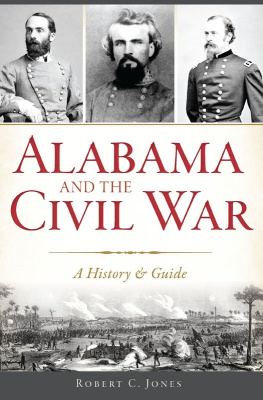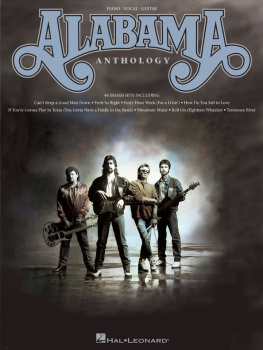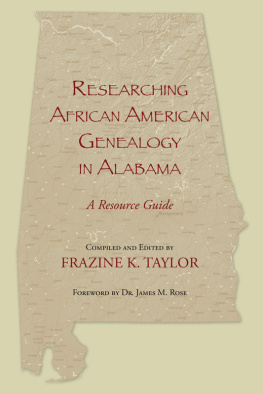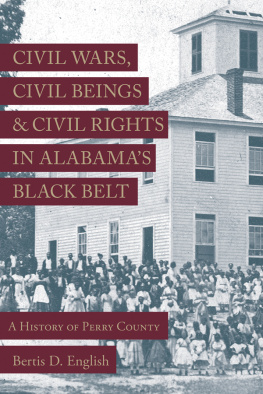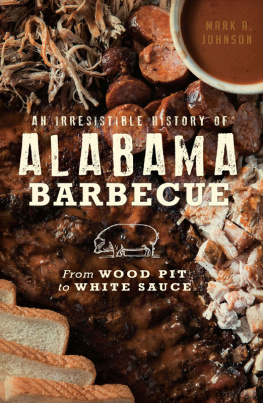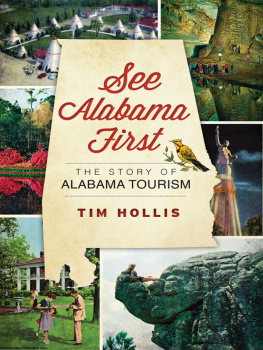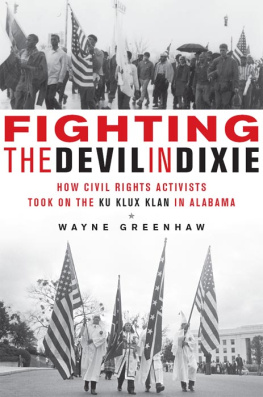

Published by The History Press
Charleston, SC
www.historypress.net
Copyright 2017 by Robert C. Jones
All rights reserved
All modern photos by Robert C. Jones unless otherwise noted.
First published 2017
e-book edition 2017
ISBN 978.1.43966.075.1
Library of Congress Control Number: 2017931803
print edition ISBN 978.1.62585.883.2
Notice: The information in this book is true and complete to the best of our knowledge. It is offered without guarantee on the part of the author or The History Press. The author and The History Press disclaim all liability in connection with the use of this book.
All rights reserved. No part of this book may be reproduced or transmitted in any form whatsoever without prior written permission from the publisher except in the case of brief quotations embodied in critical articles and reviews.
Contents
Introduction
In September 2014, I was speaking in Ashville, Alabama, to the St. Clair SCV Camp 308. My book A Guide to the Civil War in Georgia was on sale at my lecture venue, and I remember someone in the audience telling me, You ought to publish A Guide to the Civil War in Alabama. I let the idea percolate for several months. After all, there were some interesting aspects to the Civil War in Alabama. Union raids into northern Alabama (including one that was linked with the Great Locomotive Chase in Georgia); Abel Streights abortive raid through northern Alabama toward Rome, Georgia; the huge manufacturing infrastructure in central Alabama, Selma, Shelby, Tallassee and other locations; Wilsons Raid; the Battle of Mobile Bay; Canbys attacks at Spanish Fort and Fort Blakeleywell, I guess there is plenty to write about.
Theres also a number of important Civil War figures who were native Alabamians, made Alabama their adoptive home or were especially important in the Civil War action in Alabama. Major General Joseph Wheeler and John the Gallant Pelham were native Alabamians. Captain Raphael Semmes, Catesby ap Roger Jones, John Washington Inzer, William Lowndes Yancey and Brigadier General Josiah Gorgas made Alabama their adoptive home. And Major General Nathan Bedford Forrest, Major General James Wilson, Major General Edward Canby and Major General Ormsby Mitchel all made their marks on Alabama during the Civil War.
Alabama was important to the Confederate war effort in other ways, too. About 82,500 Alabamians would serve the Confederacy during the It is no wonder that Alabama would be on the receiving end of a two-prong attack in 1865 (by Canby and Wilson). During Wilsons Raid, most of the iron furnaces and arms manufacturing sites were destroyed. Some of them (Brierfield/Bibb and Shelby) would be reconstituted after the war. Other sites (Janney, Tallassee and Selma) would lie silent forever after their destruction.
As this is a guide to the Civil War in Alabama, I am interested not only in presenting history but also a what is left there today perspective. Im not much for the 150 years ago today, this parking lot was the site of a Union attack school of writing. Im interested in places that actually have something to see from the war today. Youll look in vain for the Battle of Selma or the Battle of Decatur (although there are interpretive signs at both locations). However, the battlefields/forts at Blakeley and Fort McDermott, Fort Gaines and Fort Morgan are reasonably intact.
The following comes from the Updates to the Civil War Sites Advisory Commission Report on the Nations Civil War Battlefields: State of Alabama (National Park Service, 2011). Note that they say in a more formal way what I just described. The only classification that I disagree with a bit is listing Spanish Fort as landscape and terrain have been altered beyond recognition. While this is true given that the overall battlefield in the modern-day city of Spanish Fort, in April 2015, the carefully cleared and interpreted Fort McDermott joined the ranks of preserved battlefields in the United States.
Condition | Battlefield(s) |
Land use is little changed | none |
Portions of the landscape have been altered, but most essential features remain | Days Gap, Fort Blakeley, Mobile Bay |
Much of the landscape has been altered and fragmented, leaving some essential features | Athens |
Landscape and terrain have been altered beyond recognition | Decatur, Selma, Spanish Fort |
Like in most of my recent books, I try to let the participants in the events discussed herein speak for themselves as much as possible. Thanks to sources such as Google Books, Project Gutenberg, the Library of Congresss Historic Newspapers and various universities, more and more original source material is being made available online.
Note: A word on spelling: the town of Blakeley is generally spelled with a second e. In Union dispatches, Fort Blakeley was spelled without the second e. Ive maintained that convention throughout this book, using the second e except when quoting Union dispatches.
Chapter 1
Key Players
NATHAN BEDFORD FORREST
Nathan Bedford Forrest is perhaps the most controversial general of the Civil War, at least on the Confederate side. He is also probably the greatest cavalry officer in the history of the United States.
Although a wealthy planter before the war, Forrest enlisted as a private in the Confederate army in 1861. He used his own money to outfit his regiment with horses and supplies. He was quickly made a lieutenant colonel. At the Battle of Fort Donelson, in February 1862, Forrest led almost four thousand troops across the Cumberland River to safety, escaping a siege by Ulysses S. Grant. Shortly after Donelson, Forrest helped evacuate machinery important to Southern manufacturing from Nashville.
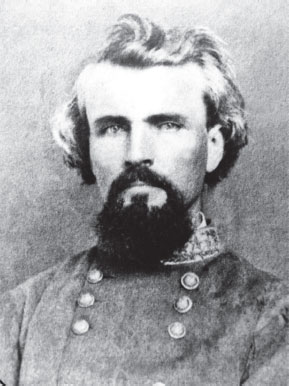
Nathan Bedford Forrest. Courtesy of the Library of Congress.
On July 13, 1862, Forrest defeated Union general Thomas Crittenden at the First Battle of Murfreesboro. Shortly after, Forrest led two thousand men on a series of raids that disrupted Grants communication lines during the Vicksburg Campaign.
In April 1863, Forrest was sent to northern Alabama and western Georgia to counter an attack by Union cavalry under Colonel Abel Streight. After pursuing Streight for more than two weeks, Forrest defeated him at Cedar Bluff, Alabama. And during the Battle of Chickamauga, Forrest pursued the retreating army of Rosecrans, capturing several hundred prisoners.
On April 12, 1864, Forrest attacked Fort Pillow near the Mississippi River in western Tennessee. Many black Union troops were killed in the battle, and Forrest was later accused of either ordering a massacre or turning a blind eye to a massacre. Colonel Thomas Jordan, who had recruited Rose Greenhow as a spy back in 1861, wrote The Campaigns of Lieut.-Gen. N.B. Forrest, and of Forrests Cavalry in 1868. Following are some excerpts from his description of the fall of Fort Pillow:
It should be remembered that the entrance of the Confederates into the work had been achieved by an impetuous rush over the parapet by each individual, and therefore, for some moments afterward, there was necessarily a general confusion and tumult, in fact, a dissolution of all organizations. Accordingly, as always happens in places taken by storm, unquestionably some whites, as well as negroes, who had thrown down their arms, and besought quarter, were shot under that
Next page
